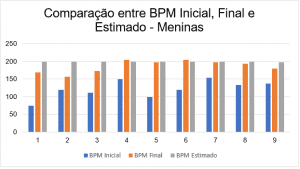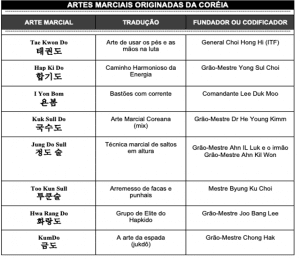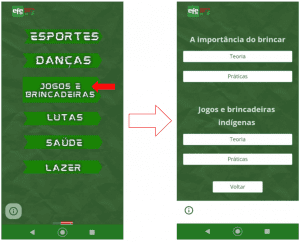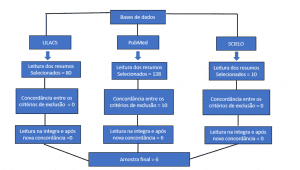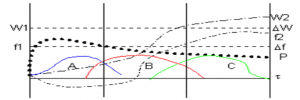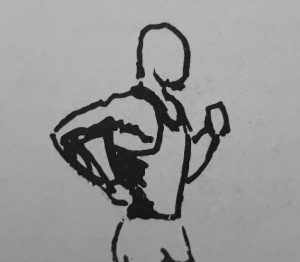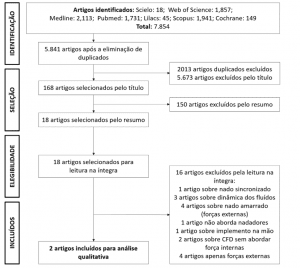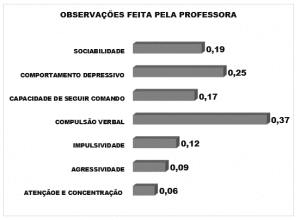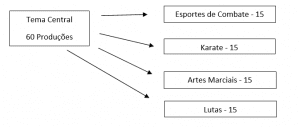ORIGINAL ARTICLE
CAMARGO, Vinicius Silva de [1], VARA, Maria de Fátima Fernandes [2]
CAMARGO, Vinicius Silva de. VARA, Maria de Fátima Fernandes. Development of human motricity in Physical Education classes as pedagogical strategies. Revista Científica Multidisciplinar Núcleo do Conhecimento. Year 05, Ed. 11, Vol. 08, pp. 131-148. November 2020. ISSN: 2448-0959, Access link: https://www.nucleodoconhecimento.com.br/education-physics-en/human-motricity
SUMMARY
The present study aims to propose the Development of Human Motricity as a pedagogical strategy to qualify physical education classes. The theoretical contribution that will be used in this research, with bibliographic methodology, is composed of renowned authors who address the theme Human Motricity, among which we highlight: Kolyniak (2008), Sérgio (2003, 2012), Feitosa (1993) and also on the fundamentals of didactics in the classroom, such as: Melo and Urbanet (2012). It was found in the course of the research that traditional Physical Education is based on the Cartesian/Newtonian paradigm, focused on a technical bias, so the new science of man, the “Science of Human Motricity” is pointed out as a means to transform this current panorama of said curricular discipline, through a new vision of man and society. Thus, this study is justified by the need for theoretical and scientific basis of the aspects that guide the Science of Human Motricity, so that an improvement in the motor, psychological and social conduct of children and young people in the teaching-learning process is based, thus abandoning anthropological and Cartesian dualism to adopt a paradigm of complexity.
Keywords: Motor Education, Human Motricity, Physical Education, Pedagogical Strategy.
1. INTRODUCTION
Currently, there are changes in the profile of students, resulting from the great diversity that exists in the student body of schools and the influence of technological tools (cell phones/tablets) in the daily routine of practical classes of physical education, where we found that most of the students who attend the final grades of elementary school show no pleasure and interest in participating in physical activities, often choosing to stay connected in social networks or any other type of virtual entertainment, thus transforming these classes into a time of total lack of objectivity and commitment to the curricular component.
From this, it is understood that researching Motricity in Physical Education classes arises from an urgent need to seek reliable theoretical sources that base new teaching methodologies on the different contents of the physical education discipline, because, currently, this important discipline is undergoing a crisis of pedagogical nature and a growing devaluation by the student body and even the faculty , since there is often a certain marginalization of physical education and professionals in this area, according to Feitosa (1993).
Thus, this study is justified by the need for theoretical and scientific basis of the aspects that guide the Science of Human Motricity to see an improvement in the motor, psychological and social conduct of children and young people in the teaching learning process, thus abandoning anthropological and Cartesian dualism to adopt a paradigm of complexity aiming at a significant contribution to the humanization of our society. In this sense Melo and Urbanetz (2008, p.105) “argue that education has the purpose of humanizing the new generations”, because “humanity in men is not given naturally, but is produced historically and socially”.
Thus, a teacher who acts only as a mere transmitter of content, disregarding the diversity existing in a Physical Education class will certainly cause disastrous effects on the learning of children and young people and will not contribute anything to the teaching-learning process of the school and especially to the lives of students, because quality education is one that promotes the overall development of the individual in its cognitive aspects , social and affective contributing in this way to an education that is the integral development of the individual.
In view of the above, the present study aims to discuss the relevance of The Science of Human Motricity in the development of elementary school classes final grades in the discipline of physical education and investigate whether or not this Science can contribute to the qualification of the teaching-learning process and, consequently, to the rescue of students’ interest in the curricular component.
In order to investigate whether this is really possible, we propose as a research problem the following question: Can the Science of Human Motricity contribute to a significant improvement in the quality of Physical Education classes and thus collaborate positively in the learning teaching process of our students? The theoretical contribution that will be used to answer this question, through bibliographic research, is composed of renowned authors who address the theme Human Motricity, among which we highlight: Kolyniak (2008), Sérgio (2003, 2012), Feitosa (1993) and also on the fundamentals of didactics in the classroom, such as: Melo and Urbanet (2012).
We emphasize that with this research we aim to contribute to the revitalization of Physical Education classes in the final years of elementary school, based on reflections about new pedagogical practices, in order to rescue the pleasure of practicing physical activities and, thus, significantly interfere in the educational process of students, breaking with the rationalist Cartesian paradigm that over the years has influenced our educational praxis.
2. HISTORY OF PHYSICAL EDUCATION AS A CURRICULAR COMPONENT
The birth of Physical Education had its origin with primitive man, from the need to guarantee its subsistence and adapt to the conditions of the environment. Tolkmitt, 1993 clarifies to us that:
Primitive men, by the conditions of life to which they were forced the physical environment, by the danger to which they constantly exposed themselves, by the need to protect themselves better and better, by the struggles of death to which their own survival was conditioned, possessed exceptional physical qualities.
According to Ramos (1982, p.16) “primitive man had his daily life marked, above all, by two major concerns – attacking and defending himself”.
Over the years, Physical Education has suffered several influences in its teaching methods, through different cultures and peoples, such as the Greeks who, according to Ramos (1982, p.19) saw physical activity as one: “a means for the formation of spirit and morals. Plato, a brilliant philosopher, referring to gymnastics, claimed that it was united to the care of the body the improvement of high, honest and just thought.”
According to Kolyniak (2008), several teaching methods will guide the practice of Physical Education, such as: Calisthenic Gymnastics, German Method, French Method, Austrian Natural Method, Generalized Sports Method and Psychokinetic Method.
The Calistheca Gymnastics method originated in Sweden and systematized by Per Ling (1776-1839), who was a nationalist influenced by the political context of Europe at that time. According to Kolyniak (2008) this method emphasized the rhythmic and rigorously standardized execution of movements, because it focused on the preparation of soldiers and the maintenance of health.
After the creation of the Caisthenic method, Kolyniak (2008) also mentions the emergence of the German Method, which was proposed by two German pedagogues influenced by Rousseau, Johann Bernhard Basedow (1723-1790) and Cristoph Friedrich GutsMuts (1759-1839), however who popularized this method after making some modifications was the German primary professor Friedrich Ludwig Jahn (1778-1852), whose purpose was the practice of outdoor physical activities with the use of simple equipment , such as logs, bars, etc. It should be noted that this method (Jahn Method) originated in the same political context in which Ling was inserted.
Kolyniak (2008) also reports the emergence of the third method – the French Method – in 1920 at the French military school Joinville-le-Pont. This method had as main proposal the body development and maintenance of organic functions and physical fitness, based on anatomical-physiological knowledge, which was also originated in a military context.
To counter the previously created methods, emphasizing the rationalization of movements in the production process that, according to Kolyniak (2008), were applied in an exacerbated manner after World War I, the Austrian Natural Method emerged, conceived by austrian biologists Gaulhofer and Streicher in the 1920s, which emphasized natural movements, thus excluding the exercises that forced joints and muscles through the use of artificial loads or acrobatic movements.
During the 1950s, the Generalized Sports Method emerged at the National Sports Institute in France, which influences to this day the majority of the activities proposed by physical education teachers in their classes and even the pedagogical proposals of many educational institutions in our country. This method was disseminated in Brazil by Professor Augusto Listello and seeks to incorporate and value sports activities as privileged content of physical education classes. According to Kolyniak (2008) the main characteristic of this method is the initiation of students in different sports, aiming at learning different motor skills through pleasurable sports practice and thus breaking the formalism of traditional gymnastics methods.
Kolyniak (2008) also mentions the emergence of the Psychokinetic Method based on studies in Psychomotricity. It was developed in France and Germany, with the French Jean Le Boulch being highlighted in its systematization. Psychokinetics has as main objective to emphasize the movement made consciously through the execution of a wide variety of movements in different situations, with and without material, in order to avoid fixation in already automated movements.
Highlighting the main methods that influenced and influenced the curricular component of Physical Education worldwide, we direct our gaze, in the next section, to the facts that marked the inclusion of Physical Education as a component of the Brazilian school curriculum.
2.1 PHYSICAL EDUCATION IN BRAZIL
School Physical Education in Brazil had its inclusion in the school curriculum of The Pedro II College, in Rio de Janeiro in 1837, thus it can be considered that this year this school component officially began to exist in our country.
Kolyniak (2008) clarifies that only in 1854 the then Minister Couto Ferraz had the initiative of wanting to generalize Physical Education as a mandatory practice in the school system, with the inclusion of gymnastics as a compulsory subject in primary education and dance in secondary education. It was Rui Barbosa, in 1882, who recommended the mandatory insertion of gymnastics for both sexes through a primary education reform project, including also the aforementioned requirement for teacher training courses.
However, Physical Education became part of much of the Brazilian school system effectively only from 1930. In the period between 1837 and 1930, the fundamental objectives of school gymnastics focused on two basic concerns: health and eugenics (concern with improving race), this was due to the political and economic status in which Brazil was inserted at this time – a period in which Brazil had become politically independent of Portugal (Kolyniak, 2008).
From 1930, in the so-called Vargas Era (era of industrialization of the country), Kolyniak (2008) highlights that new elements were included in the practice of Brazilian school physical education, elements that were still influenced by the medical-military discourse, turning to the development of the labor force (to respond to the demands of industrial production) and the cultivation of moral values – values of civility and patriotism. The teaching methodology that predominated from 1930 to 1945, in the Brazilian teaching of Physical Education, was the French method, which was already adopted by the army in the 1920s.
After World War II there was a great appreciation of the sport, a fact that had a significant impact on school physical education. With this in the 1950s, the old methods based on medical-military inspirations were giving way to a new philosophy of work that was based on generalized sportsivization, which led the aforementioned curricular component to a progressive identification with the sport, Kolyniak (2008).
Kolyniak (2008, p.56) tells us that from 1969, already with the military dictatorship in full swing in our country, “school physical education began to assume sport as a fundamental reference for school development”. Having as main interest of the federal government the implementation of an educational project characterized by technicality, in order to remove from the people the opportunity of the same develop critical sense through reflections about the political and economic reality of our country.
Sport also served as a way of projecting a positive image of Brazil in full development, in the international political scene. To this end the sport was highly valued so that our athletes had a significant improvement in their performances in the Olympic Games and the Pan American Games. Kolyniak (2008, p.60) explains to us that: “it can be said that, in the period from 1969 to 1980, school physical education was based on the educational value of sport, having as its main objective the improvement of students’ physical fitness and sports initiation”.
With the decline of the military dictatorship, a reflection began on the meaning of physical education as an element of education and as an area of knowledge. In this context, it is perceived that the current trends of Brazilian school physical education began to be delineated from 1980 on. Kolyniak (2008, p.64) points out that “in the second half of the 1980s the ‘crisis of physical education’ manifested itself, in the school environment”, because many physical education teachers felt insecure with the contents and teaching methodologies they saw applying in their classes.
With the beginning of the crisis in School Physical Education, there was a movement to seek its renewal, with the use of critical theories of education, with a focus focused on the socio/historical and political/economic dimensions of pedagogical practice and its implications for the change of objectives, contents and new teaching methodologies.
According to Kolyniak (2008), with the intensification of efforts aimed at renewing the objectives of physical education, a new history was initiated for this curricular component with the promulgation of law no. 9394/1996 (LDBEN), making it a mandatory curricular component, ensuring its legality and its integration into the pedagogical proposal, respecting the different age groups and peculiarities of the school population. After the enactment of this law (Law of Guidelines and Bases of National Education – LDB), the Ministry of Education began the elaboration of the National Curriculum Parameters for Elementary School and, in 1997, the National Curriculum Parameters of Physical Education (PCNEF) were published.
From this moment on, Brazilian School Physical Education has taken a very important step towards its resignification of its methodological teaching objectives. We believe that only through a theoretical/scientific basis will we be able to base ourselves so that the much-loved Brazilian school physical education becomes a pedagogical practice that transforms our social reality and is more respected by the community in general.
In this sense, it becomes a very great challenge to develop a pedagogical practice in humanizing school physical education and integrated with the new Teaching Methodologies, which will contribute to the ethical and moral growth of our society, since we know that the discipline of Physical Education is currently in an identity crisis as a school discipline, because it is not recognized as a science , as Said in Feitosa (1993, p. 82):
Physical Education is not science, it has no scientific community, and these are just some of the great problems it is in. It is the first time that, in the history of Physical Education, an encompassing discourse emerges, which enables it to a space of autonomous and independent scientific development. We lack, however, the competent scientific community to recognize and criticize the paradigm it embodies. (FEITOSA, 1993, p.82)
From this is that we feel provoked to think of new possibilities for the teaching of Physical Education in the school environment, envisioning as a way for this the science of human motricity, on which we will refer in the next chapter.
2.2 CONTRIBUTIONS OF THE SCIENCE OF HUMAN MOTRICITY TO A NEW PEDAGOGICAL VISION OF PHYSICAL EDUCATION CLASSES
Physical Education, traditional, is inserted in a social/cultural context in which technicality and income sports (competitions) prevail, where one works with a view focused on an exaggerated income bias and competitiveness. Thus, the work philosophy of the Physical Education professional was focused only on the development of basic and specific motor skills of the most practiced and known sports modalities of our society, such as futsal, volleyball, basketball and handball.
Thus, the work of the physical educator was restricted only in technical training (Technicality) and especially the development of the specific motor skills of each sports modality (mentioned above), in physical education classes, with this philosophy of work, it is evidenced the intention to work only with the basic technical foundations, such as: pass, mastery, driving, dribbling, pitches, pre-sports games, etc..
Feitosa (1993, p.116) tells us that:
Traditional Physical Education affirms culture, but it is not explained within the framework of a culture understood as creativity, as an invention, as research, since it survives from the alms of analog models and the out-of-the-way enthusiasm of many of its technicians and not from a scientific attitude, a decision and scientific commitment that see it as an emerging phenomenon, evolving, in the general framework of sciences.
We want with this study to contribute positively to the construction of new knowledge that will give a new pedagogical vision for physical education classes, since Feitosa (1993, p.32) states that “the said Physical Education can not continue to operate platonically with scientific data that arrive at it fifty years ago”, because if it wants to be an instrument of liberation and with this reason to justify itself as a culture should seek to change its paradigm , because, according to this author, physical education goes into crisis when the Cartesian view of man goes into crisis.
Traditional physical education is the result of Cartesian anthropological rationalism, which leads us to such a dichotomy body and mind, from which results the education merely of a physicist, which presupposes only a biological body that does not think or has its own opinion.
Tojal (2004, p. 09) states that in Brazilian culture the term physical education is reductionist, “because this term is reductionist and is understood simply as ‘educating the physical'”, a view that does not represent what actually develops in this area.
Sérgio (1999) who is the great precursor of the new Science “of Human Motricity”, gives us a new vision of man, because in the Cartesian/Newtonian paradigm this is usually linked to the technical form, aiming only at the result obtained many times through tireless repetitions of movements, implying that students who do not have a profile that fits the aforementioned paradigm (income) are considered incapable or even incompetent.
Motor Education, which is the pedagogical branch of Human Motricity Science, comes to break with this mechanistic bias, in this sense Tojal (2004, p.17) explains to us that:
[…] Human Motricity distancing itself from the concepts of traditional Physical Education, which is mechanistic, which presupposes a Cartesian/Newtonian view, which is different body and mind and cares more about the result – it is usually connected to the technical way of performing stereotyped models, organized in the composition of times and repetitions.
Thus, the new Science of Human Motricity allows us to change the view of man, because it is a practical being, which depends on his body and uses the same for work and leisure relationships, thus building his history through motricity.
Man – according to the new paradigm, the paradigm of complexity – is a being in constant evolution, which is in search of its transcendence, transcendence in the words of Tojal (2004, p.16) should be understood as “a desire to overcome, overcome or overcome oneself, linked to the intentionality operating of the individual himself as the driver of his own history […]”.
In line with this, Sérgio (1995, p. 23) states that “Man is an appeal to transcendence and, as such, a practical being that in totality body-soul-nature-society and by motricity seeks to transcend and transcend itself, aims at the Absolute”.
As a science, which is based on complexity, Human Motricity cannot admit that the teacher is a mere transmitter of finished and ready techniques, techniques that were rooted in our pedagogical practices (physical education) through history, mentioned earlier in this article, and thus emphasizing only the disciplinary factor in the classes of said discipline. Human Motricity does not present ready-made and unfinished formulations for applicability in the school context, but we believe that this Science comes to help us explore new horizons for Physical Education, a fact that we will observe in the next chapter.
2.3 DEVELOPMENT OF HUMAN MOTRICITY IN PHYSICAL EDUCATION CLASSES: REBUILDING GOOD PEDAGOGICAL PRACTICES
In the school context that we are at this moment, where only the technique and the exacerbated competitiveness take over our pedagogical practice, we turn to the construction of new methodologies that will enrich this area of knowledge. In this sense, we seek support in Feitosa (1993, p. 148) who stresses “we need to treat the problem of robotization of the movement as, perhaps, the starting point for the pedagogical revolution”. With this we want to make it clear that we do not intend to present a ready and finished prescription, nor do we intend to solve the whole problem of Brazilian School Physical Education, but to contribute so quickly to a democratic and emancipatory reconstruction of our pedagogical practice, aiming at a real “humanization of our society”, which Freire (1987, p.38) defends:
What seems indisputable to us is that if we want the liberation of men, we cannot begin by alienating them or keeping them alienated. Authentic liberation, which is humanization in process, is not something that is deposited in men. It’s not an over-the-same word, hollow, it’s a mystifying. It is praxis, which implies in the action and reflection of men on the world to transform it.
The Science of Human Motricity and its new vision of man helps us to perceive the real need to update the school and its pedagogical policies, regarding the philosophy of work of physical education, because nowadays what is observed is an outdated way of working this curricular component, because what is valued is only performance and competitiveness, the legacy of the Cartesian/Newtonian paradigm.
Based on the readings, we want to emphasize the importance of proposing a new praxis in physical education classes, a fact that is urgent due to the transformations that the modern world (society) imposes on us daily, in a very accelerated way. On this Feitosa (1993, p. 155) warns that “the modern world needs a living school, a pedagogy attuned to the permanent and galloping transformation that characterizes today’s society and man”.
With the Development of human motricity as a backdrop for the realization of physical education classes, we emphasize that its pedagogy must be focused on the constant discovery of new possibilities aimed at the liberation of the student, making it the center of the educational process, thus valuing his life history and especially his individuality as a human being.
From this, the importance of teacher engagement in a new work proposal of physical education is highlighted, a proposal that is tied to a pedagogy focused on the innovation of its teaching methodology, because, according to Feitosa (1993, p. 156):
A pedagogy resulting from the science of human motricity advocates the primacy of personalization over massification. Personalization that would be the maximum of individual expansion, reaching the limits of personal possibilities and, therefore, the maximum differentiation of each individual in the social whole.
In this context, the physical educator is expected to raise awareness and perceive changes in the profile of students and thus the flexibilization of their work strategies, aiming at the real awareness of them for the development of a pedagogical praxis, in which the teacher and students – together – build a new social reality, thus combating the existing social inequalities. In line with this, Feitosa (1993, p. 153) points out that:
[…] Our pedagogy makes no sense without a vision of man and the world. It formulates a scientific and humanist conception that finds its expression in a diagonal praxis in which teachers and students together, in the act of analyzing an inhuman reality, denounce it, announced at the same time its transformation, in the name of the liberation of ma[…]n.
With this new work proposal, we want our student to become a freer person and producer of his own history, so we emphasize that the Science of Human Motricity allows us to work with the free and conscious movement, using sports, dances, recreation and so many other different ways of developing such skills. The work based on this philosophy uses an immense range of activities, which aim at the development of Motricity and not only for the purpose of developing robotic movements.
Feitosa (1993) stresses that the human movement is of fundamental importance, because through it the human being can transform the environment in which he lives and produce culture. It also shows that through the perspective of The Science of Human Motricity human movement takes a much more important proportion than a simple mechanism of body levers or change of place (displacement), thus revealing an intentionality of the being in motion.
In his study on the pedagogical and educational implications of the science of human motor skills, Pereira (2005) warns about the importance of developing a liberating and humanizing pedagogical practice through Motor Education – which is the branch of Human Motricity Science.
On the variety of learning situations proposed through Human Motricity, Feitosa (1993) clarifies that the learner is encouraged to imagine, invent and create new modes of relationship in the physical and human environment, releasing his personality through his originality, thus constituting a fertile space of possibilities for the emergence of the new man, more humanized, free, critical and conscious and liberating.
In order to further deepen our study on the Science of Human Motricity, we will bring to follow the guiding principles for practice with students.
2.4 GUIDING PRINCIPLES OF EDUCATIONAL PRAXIS BASED ON HUMAN MOTRICITY
When thinking of a praxis based on Human Motricity, it is necessary to resumify Pereira’s words (2006, p.36) that explains “educating by Motricity is educating for criticality, for autonomy, for freedom and transcendence, of human life”. This is what we want for the practice of school physical education. However, we do not intend to formulate a finished and ready prescription, because we believe that this new science is taking its first steps so that in the not too distant future we can envision new horizons for our Brazilian School Physical Education.
In this sense, we will list some principles, developed by Feitosa (1993), that should guide educational praxis based on this pedagogical proposal (Human Motricity):
– COMPLEXITY–CONSCIOUSNESS: “complexity is a sign of consciousness both at the neuro-psycho-motor level and at the level of social relations that stimulate this consciousness” (FEITOSA, 1993, p.161). The author justifies this principle by believing that every pedagogical act should offer the possibility of self-knowledge, which is the fundamental step of the entire educational path in search of more being.
– DIÁLOGO: “with the vision of the science of human motricity, dialogue must distinguish the relationship of simple contact, enabling true encounter, which does not exclude conflict”, since in the line of complexity, dialogue is configured as “a clear, unequivocal source of knowledge and new knowledge” (FEITOSA, 1993, p.163).
– CREATIVITY: “motor conducts only truly satisfy the person, when creativity allows the birth of the possible, opens access to transcendence” (FEITOSA, 1993, p.164), a path by which the individual becomes aware that he is a subject who is a story-making and non-object subject.
– SOLIDARITY: “from the pedagogical point of view it is a key word for motor education because totality is a root word for the science of human motor ism” (FEITOSA, 1993, p.165).
– SCIENTIFICITY: The author suggests that the proposals to be worked with the human being aim at the development of the human being, “through motricity, aiming at an awareness of the importance and meaning of the body” (FEITOSA, 1993, p.166).
– TRAINING: Where training overlaps with information, thus imposing itself as a guiding principle of pedagogical action.
– TRUST-HOPE: This principle is justified by the fact that “hope is connected to the pedagogical act at the same moment when man is admitted as being open to transcendence and, therefore, project” (FEITOSA, 1993, p.169), so double confidence-hope is necessary because trust is indispensable in the act of projecting.
– PRAXIS: It becomes a guide principle because it “transforms pedagogical action by requiring coherence and rigorous reflection, which will make it more lucid and just. Praxis implies responsibility beyond the awareness of action” (FEITOSA, 1993, p.170).
– LOVE: The author justifies the inclusion of love as a guide principle of the pedagogical act by believing that this is the most important and the greatest of them all, because “To love is to place the other as another, to let the Significante come in it. Thus, it is love that, in the analytical situation, makes possible the passage to sublimation. He’s an act, then.” And, moreover, he emphasizes that “love is at the origin of every transcendent act, whether it is this transcendence of oneself, of others or of the world toward the absolute” (FEITOSA, 1993, p.172).
Complete this eneagram, which is configured as a catalyst symbol of the guiding principles of the pedagogical action of the Science of Human Motricity, Feitosa (1993) warns about the need for the presence of all these guiding principles so that a truly innovative, motivating pedagogical praxis can be developed and that will add new teaching methodologies to work on the immense range of motor conducts existing in sports , struggles, gymnastics, recreational activities, etc. Also, Feitosa (1993, p. 175) clarifies that it is of fundamental importance that for the success of the development of this pedagogical approach, “we must try to critically reflect the possibilities of transformation and overcoming this sport, which ‘is the perfected technique of body performance'”.
2.5 METHODOLOGY
The present study consists of a bibliographic research of qualitative nature, which elaborated abstracts of several literary works, with the objective of contributing in a simple way without having the intention of exhausting all the possibilities of construction of said researched knowledge, related to pedagogical practices having as bias the development of Human Motricity in school physical education classes.
3. FINAL CONSIDERATIONS
In this text we present four important topics for the structuring of this research. First, we approach a brief history of Physical Education as a curricular component, with the aim of listing the first pedagogical trends that emerged as precursors of this curricular component. The second topic concerns the evolution of pedagogical trends, more specifically in Brazil, we highlight with this the various methodologies and trends that influence our pedagogical practice to this day, always focused on the Cartesian/Newtonian paradigm. It is also perceived that these methodologies are outdated, thus affecting the interest of students in body practices. When observing the various difficulties of motivating students to practice physical activities in daily school life, we decided to research new methodologies that would enrich the daily life of physical education classes, with this we realized that the crisis of this curricular component was deeper than previously thought.
With this finding we decided to enter a new world where we approach in a simple but serious way the new Science of Human Motricity, which has as its precursor professor Dr. Manuel Sérgio, where we approach in the third and fourth topics of this article the contributions that this science presents to us so that we can change the current panorama in which brazilian school physical education is located.
We found that this approach has much to add to our daily pedagogical practices, because it is based on a philosophy that really liberates and develops the human being, expanding our horizons through activities that will contribute to the construction of the new man. Being a new Science, which comes to sustain us as workers of Human Motricity, we seek to list some guiding principles of pedagogical practices in the classroom, because it has become a cumof techniques devoid of meaning for our students.
We are aware that with this research are not closed the studies of this new Science, because we believe that it is in a phase of construction of solid bases of knowledge, so that in the not too distant future it can awaken a significant appreciation of our profession. With this we want to leave our invitation to future professionals who want to contribute to the continuation of research in this area of knowledge, because we believe that this new work philosophy is the beginning of the changes so dreamed of by the vast majority of professionals of Brazilian school Physical Education.
Finally, we emphasize that in no way do we intend to devalue Physical Education with this research, but to contribute to it becoming an area of autonomous and independent knowledge, thus acquiring new conceptual directions. Our greatest aspiration is to draw attention to the Science of Human Motricity, because we believe that this approach is capable of conceptually and scientifically revolutionizing School Physical Education, projecting it to a new direction. Thus we are able to dazzle a very promising future for the future Motor Education, pedagogical branch of Human Motricity Science.
REFERENCES
BRASIL, Ministério, da Educação. Lei de Diretrizes e Bases da Educação Nacional, nº 9.394, de 20 dezembro de 1996. Diário Oficial da União, Brasília, DF, dez.1996.
FEITOSA, Anna Maria. Contribuições de Thomas Khun para uma epistemologia da motricidade humana. Lisboa: Instituto Piaget, 1993.
FREIRE, Paulo, Pedagogia do Oprimido, ed. Rio de janeiro, 1987.
KOLYNIAK, Carol Filho, Educação Física Uma (nova) Introdução, educ – editora da PUC, São Paulo, 2008.
MELLO, A. de.; URBANETZ, S. T. Fundamentos de Didática, 1ª Edição, Curitiba, Ed. Intersaberes, 2012.
PEREIRA, A. M. A Ciência da Motricidade Humana: Implicações Pedagógicas e Educacionais. (Doutoranda na Universidade da Beira Interior – Portugal). Disponível em: www.uel.br/…/CONPEF2005/MESASPALESTRAS/cienciadamotricidade.pdf
RAMOS, Jayr Jordão, Exercícios Físicos na História e na Arte: do homem primitivo aos nossos dias. Ibrasa, São Paulo, 1982.
SÉRGIO, Manuel, Motricidade Humana: Um Paradigma Emergente. Editora da Furb, Blumenau, S.C., 1995.
_________, Um Corte Epistemológico: Da educação física à motricidade Humana, Instituto Piaget, Lisboa Portugal, 1999.
TOJAL, João Batista, Da Educação Física à Motricidade Humana: A Preparação do Profissional, Instituto Piaget, Lisboa Portugal, 2004.
TOLKMITT, Valda Marcelino, Educação Física uma Produção Cultural: Do Processo de Humanização à Robotização! E depois?, Módulo – Editora e Desenvolvimento Educacional Ltda, Curitiba, 1993.
[1] Postgraduate and graduation in Physical Education.
[2] Guidance counselor. Graduated in Physical Education (UFPR) and Physiotherapy (UTP). Master in Education (UFPR).
Sent: July, 2020.
Approved: November, 2020.

